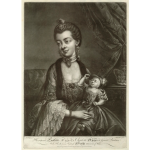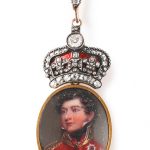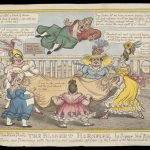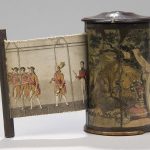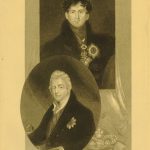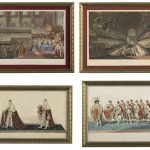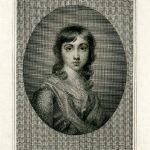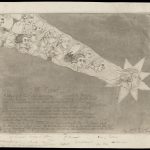George IV (George Augustus Frederick; 12 August 1762 – 26 June 1830) was King of the United Kingdom of Great Britain and Ireland and King of Hanover following the death of his father, King George III, on 29 January 1820, until his own death ten years later. From 1811 until his accession, he served as regent during his father’s final mental illness. Reference: Wikipedia
King George IV. George, Prince of Wales was given no official duties by his father King George III. Jockeying for power, he sought to undermine the King by siding with the Whig opposition led by Charles James Fox. When the King went temporarily insane in 1788 William Pitt, the Tory Prime Minister, proposed a restricted Regency to protect the King’s interests. The King’s recovery three months later ended the ‘Regency Crisis’. The Regency Bill was revived during the King’s final illness. George was sworn Regent in 1811 and crowned King in 1820. Vain, self-indulgent and debauched he was, however, a man of exceptional taste and style who is best remembered for his magnificent patronage of the arts. Reference: The National Portrait Gallery
Charlotte of Mecklenburg-Strelitz; King George IV when Prince of Wales by Richard Houston, published by Robert Sayer, after Robert Pyle mezzotint, mid 1760s 19 3/4 in. x 13 7/8 in. (503 mm x 353 mm) plate size; 22 in. x 16 1/8 in. (560 mm x 408 mm) paper size acquired unknown source, 1952
Reference: The National Portrait Gallery
A Royal gold, diamond and enamel portrait miniature pendant of George IV, miniature by Henry Bone R.A., London, dated 1821 the enamel head and shoulder portrait of George IV when Prince Regent after Thomas Lawrence wearing a field marshal scarlet uniform and orders including the Garter Star and Golden Fleece, in an engine-turned gold frame mounted with diamonds and a translucent red enamel crowned cipher of the king, with matching enameled crown-form top set with diamonds and a diamond-set suspension loop apparently unmarked height 2 3/4 in. 7cm
Sold for 28,125 USD at Sotheby’s in 2014
Print entitled ‘The Blanket Hornpipe’. Image satirises the lack of popularity of George IV after his wife’s affair. Published by Benbow, 1820
Print entitled ‘The Blanket Hornpipe’, depicting a group of women throwing George IV in the air using a blanket while insulting him.
1820 (published)
Reference: © Victoria and Albert Museum
A cloth mounted banner recording George IV’s funeral procession by W. Saws, No 15 St James Street, London, the handcoloured printed banner extending to great length, depicting the full procession, unwinding from within a cylindrical wooden reel, with coloured print frieze, 12cm high.
Sold for £ 300 inc. premium at Bonham’s in 2008
Portraits of George IV and William IV; George wearing star if the Garter and the Golden Fleece; William IV after C Jagger, seated at table book in hand, wearing Star of the Garter. Etching and engraving Producer name After: Charles Jagger
Print made by: Thomas Abiel Prior biography
Date 1830-1886 (circa)
Reference: © The Trustees of the British Museum
Four Prints of the Coronation of King George IV, July 19, 1821 colored etchings and aquatints after Charles Wild and J. P. Stephanoff, including “The King in His Royal Robes, Wearing a Cap of Estate”, “Procession of the Dean and Prebendaries of Westminster with the Regalia”, “Lord Gwydyr, Deputy Lord Great Chamberlain and Lord Howard of Effingham, Deputy Earl Marshal of England”, and “The Royal Banquet, The Bringing up of the Second Course”. In matching frames and glazed. sights 14-1/2″ x 18-1/2″ to 12-1/2″ x 19-1/2″, framed 18-1/2″ x 22-1/2″ to 15″ x 22-1/2″
Sold for $500 at New Orleans Auction Galleries in 2020
